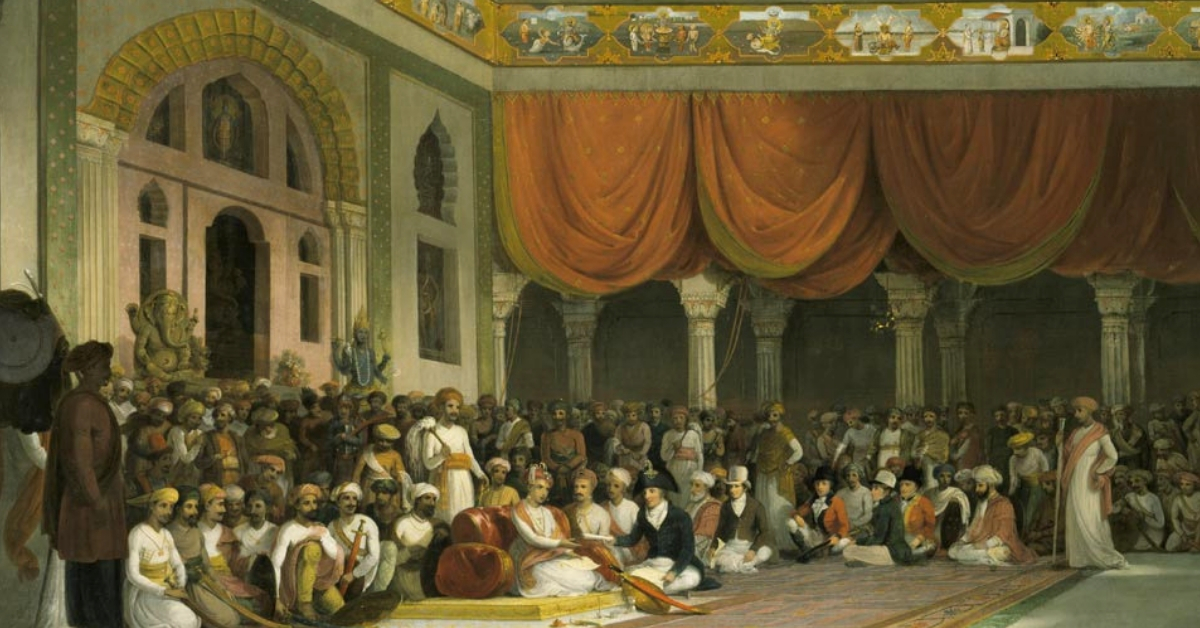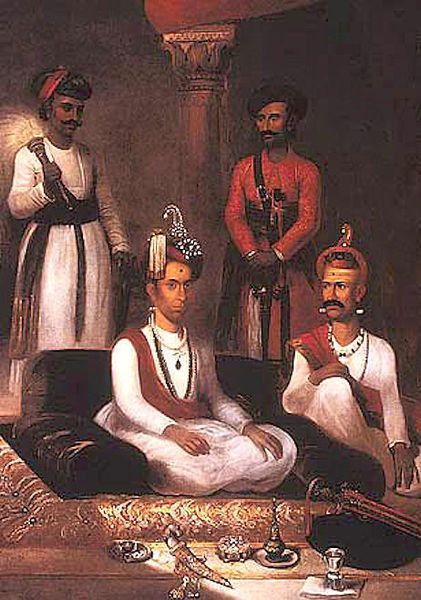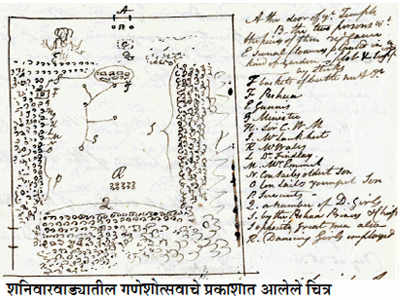In 1792, a Scottish Artist Came to Paint a Peshwa. The Chaturthi He Saw Will Amaze You!
James Wales landed in India upon invitation from Sir Charles Malet, a diplomat for the East India Company stationed in the court of the Peshwa Marathas.

Ganesh Chaturthi—the festival famously “started” by Bal Gangadhar Tilak to unite the masses in an attempt to revolt against the British forces—has its roots way back in history. Even as the entire country comes together to celebrate the Hindu God of wisdom, the festival holds a special place in the hearts of Maharashtrians.
In Maharashtra, Ganesh Chaturthi had been a cultural phenomenon since the 16th century—the time of Shivaji Maharaj’s reign.
Why celebrate with PoP or chemical paint? Get home an eco-friendly Ganesha idol instead. Click here to bring one to your home today!
Ganesha (or Ganpati, as known in Marathi), was the family god, or “Kuldaivat’ of the Peshwas, the Prime Ministers of the Maratha empire, and during the peak of their reign, the festival was celebrated amid much fanfare in the city of Pune, especially at the Shaniwar Wada, which was the official residence of the Peshwas.
In 1792, James Wales, a renowned Scottish artist, landed in India upon invitation from Sir Charles Malet, a diplomat for the East India Company stationed in the court of the Peshwa Marathas.
Madhavrao Peshwa, a valiant chief, who helped the Maratha kingdom recover the losses they suffered in the Third Battle of Panipat was ruling the kingdom at this time.

Malet had invited Wales between July and December, to paint portraits of himself, the Maratha chiefs and their ministers.
As luck would have it, Wales arrived in Pune (or Poona, as it was called back then) just as the celebrations for Ganesh Chaturthi were about to commence, and walked right into the lively and noisy festivities. He was immediately fascinated with the atmosphere—men clad in colourful traditional dresses, women wearing gold and pearls from head to toe, a large crowd of devotees assembled to sing ‘aarti’ for the God of wealth—and wrote about it at length in his diary.
Why are we talking about an event which occurred 226 years ago?

Well, recently, this diary was recovered from the Yale Centre of British Art Museum, and his account gives a beautiful glimpse into the celebrations at the time.
“Today, I was invited for the Ganeshostav celebrations. Upon reaching there, I was taken to a huge room—decorated like the entrance to a temple. A door in the room showed me lighted lamps and Brahmins conducting the Pooja,” writes Wales.
You may also like: Kanhoji Angre, the Maratha Admiral Who Defended Konkan from the Europeans!
The diary is currently in a non-circulating status at the British Art Centre, and the above account is a translation from a Marathi newspaper.
Wales had also made a rough portrait of the celebrations in Shaniwar Wada. It shows where the idol, devotees, Peshwas, British Ministers etc. sat during the ceremony.

The index of the image is such:
A- Entrance to the temple.
B- Two servants wearing red silk attire.
C- Several flower bunches, like those kept in gardens, kept intact by sticks beneath them.
D- Material for Pooja.
E- Shri Ganesh.
F- Peshwas in their seats.
G- Ministers (presumably, Nana Fadnavis).
H- Sir Charles Malet.
I- Mr Lockhart.
J- A plate of Betel leaves.
K- Wales.
L- Dr Findley.
M- Mr Emmanuel.
N- Colonel Lady’s elder son.
O- Colonel Lady’s younger son.
P- Servants.
Q- Dancer ladies.
R- Group of professional dancers.
S- Important ministers sitting near and in front of the Peshwa.
You may also like: Rare 344-Year-Old Letter Written by Shivaji Before His Coronation Found in Satara!
After the fall of the Maratha Empire, the influence of the Peshwas also subsided, and Ganesh Chaturthi stopped being a public celebration. The British Raj did not just crush the spirits of devotees, but their laws restricted the assembly of Indians in public spaces. This, until Lokmanya Tilak, reintroduced it as a public festival in 1892. The rest, as you know, is history.
(Edited by Gayatri Mishra)
Like this story? Or have something to share?
Write to us: [email protected]
Connect with us on Facebook and Twitter.
If you found our stories insightful, informative, or even just enjoyable, we invite you to consider making a voluntary payment to support the work we do at The Better India. Your contribution helps us continue producing quality content that educates, inspires, and drives positive change.
Choose one of the payment options below for your contribution-
By paying for the stories you value, you directly contribute to sustaining our efforts focused on making a difference in the world. Together, let's ensure that impactful stories continue to be told and shared, enriching lives and communities alike.
Thank you for your support. Here are some frequently asked questions you might find helpful to know why you are contributing?


This story made me
-
97
-
121
-
89
-
167














